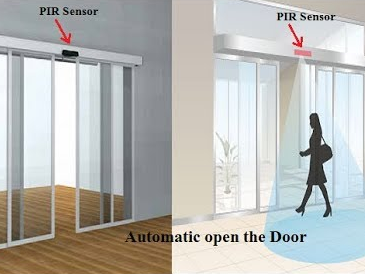How are automatic door open sensors installed and configured for different environments?
Automatic door open sensors are a widely-used technology in many environments such as hospitals, airports, hotels, and other public buildings. They provide a convenient and efficient way for people to access buildings without the need to touch doors, reducing the risk of transmitting germs or spreading illnesses. In this article, we will discuss how automatic door open sensors are installed and configured for different environments.

1.Determine the type of sensor required
There are different types of automatic door open sensors available, and the type you choose will depend on the environment and specific requirements of the building. The most common types of sensors are motion sensors, pressure sensors, and infrared sensors. Motion sensors detect movement and trigger the door to open, pressure sensors detect the weight of a person or object and open the door, while infrared sensors detect the presence of an object in the sensor’s field of view.
2.Install the sensor
Once the type of sensor has been determined, it's time to install it. The installation process will depend on the type of sensor being used. For example, motion sensors are typically mounted on the ceiling, while pressure sensors are installed on the floor. Infrared sensors are mounted on the wall, above the door frame.
It's essential to ensure that the sensor is installed in the correct location for it to function correctly. For example, a motion sensor should be placed in an area where it can detect movement, such as the entrance or exit of a building.
3.Configure the sensor
After installing the sensor, it's time to configure it to work correctly. This involves setting the sensitivity of the sensor to ensure that it detects the correct movement or pressure. The sensitivity of the sensor will depend on the environment and the expected foot traffic.
For example, in a hospital, the sensor's sensitivity should be set to a low level to detect slow movements, while in an airport or shopping center, it should be set to a high level to detect fast movements.
4.Test the sensor
Once the sensor has been installed and configured, it's important to test it to ensure that it's working correctly. Testing the sensor involves walking in and out of the sensor's field of view to ensure that the door opens and closes correctly.
It's also essential to test the sensor's sensitivity to ensure that it's detecting the correct movement or pressure. If the sensor is not working correctly, adjustments may need to be made to the sensitivity settings.
5.Maintenance
Automatic door open sensors require regular maintenance to ensure that they continue to function correctly. Maintenance involves cleaning the sensor regularly to remove any dust or debris that may interfere with the sensor's function.
It's also important to inspect the sensor regularly to ensure that it's mounted correctly and that there are no loose connections or damaged components.
In conclusion, installing and configuring automatic door open sensors for different environments requires careful consideration of the type of sensor required, the installation process, and the configuration of the sensor's sensitivity. Proper maintenance of the sensors is also essential to ensure that they continue to function correctly. By following these steps, buildings can ensure that they provide a convenient and efficient way for people to access the building while minimizing the risk of transmitting germs or spreading illnesses.







